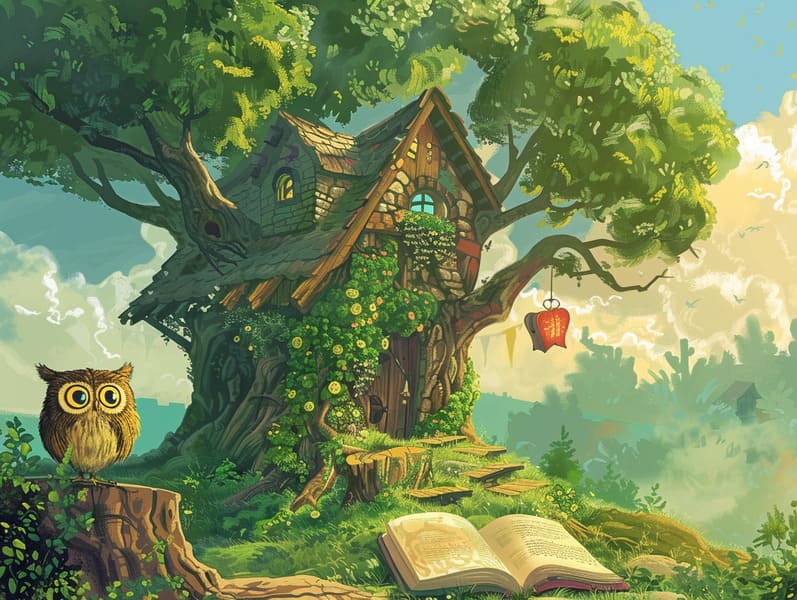The Journey of Legendary Fairy Tales and Their Continued Captivation.
The Journey of Legendary Fairy Tales and Their Continued Captivation.
Blog Article

Short fairy tales have ancient roots. These tales have been told from one generation to the next far before they were ever inscribed. They were born from a variety of backgrounds, including Asian traditions. They were initially conveyed among elders, often carrying themes and messages mirroring the societal norms and beliefs of the time.
Jacob and Wilhelm Grimm, Jacob and Wilhelm Grimm, were among the first to gather and publish many of these beloved fairy tales. Their anthology, "Grimm's Children's Stories," included tales like "The True Bride," "The Story of Hansel and Gretel," and "Snow White," which have since become classics in the world of timeless fairy tales. Similarly, H. C. Andersen's whimsical narratives, such as "The Sea Maid," and "The Story of the Ugly Duckling," have touched hearts worldwide, securing their place in the pantheon of timeless fairy tales.
Despite their ancient origins, these tales remain as relevant as ever, especially as nighttime stories for kids. These charming stories are now available in various formats, including vividly illustrated books, fantastical animations, and digital fairy tales.
Their ongoing significance can be traced to several whimsical characteristics:
Ethical Lessons: Traditional fairy tales often share important moral lessons. Narratives like "The Tale of the Boy Who Cried Wolf" teach the significance of honesty, while "The Race of the Tortoise and the Hare" underline the traits of perseverance and meekness. These tales offer young readers clear distinctions between virtue and vice, building their moral compass in a mild yet deep way.
Kindness and Comprehension: Ancient fairy tales frequently involve protagonists facing difficulties and adversities, stimulating children to connect with their struggles and celebrate their triumphs. For instance, "The Story of Beauty and the Beast" emphasizes the importance of seeing inner beauty to appreciate the real person of a individual, cultivating understanding and understanding.
Cultural Awareness: Many old fairy tales are infused with the cultural contexts from which they bloomed. Exploring these tales can provide captivating looks into different cultures, encouraging a sense of global appreciation and comprehension.
Creativity and Fantasy: The fantasy-filled elements in traditional fairy tales—talking animals—kindle children’s creative dreams. These fairy tales move readers to imaginary realms, invigorating creative dreams and a sense of amazement that lasts a lifetime.
Traditional fairy tales are not only entrancing but also didactic. They serve as charming tools in enhancing various brain and heart skills in kids. When classic fairy tales are recited, they cultivate communication skills by offering new lexicon and elaborate sentence structures. This practice also advances hearing abilities and focus, as the young listen intently, excited to see what happens next.
Furthermore, analyzing the themes and characters of timeless fairy tales can develop intellectual skills and reasoning skills. The young are shown to pinpoint patterns, anticipate outcomes, and figure out cause and effect. These conversations also assist children say their thoughts and feelings, promoting their emotional intelligence.
In today’s digital era, the accessibility of internet fairy tales has made check it out these narratives more reachable than ever. Digital sites and web apps make available huge assortments of bedtime fairy tales that can be read or listened to anytime, anywhere. Fairy tales told out loud are particularly favored, featuring an engaging way for little ones to appreciate these enchanting tales. Audio stories and voiced videos carry characters and settings to life, often complemented by bewitching background sounds and music that raise the storytelling experience.
The timeless allure of ancient fairy tales lies in their ability to adjust to present days while retaining their core values. Contemporary adaptations of these fairy tales often integrate more different figures and modern settings, making them relatable to today’s audience. However, the underlying themes of bravery, kindness, and righteousness remain unchanged, continuing to touch audiences of all ages.
Fairy tales also offer a sense of familiarity and understanding. They give a neat narrative with a plain beginning, middle, and end, often ending with the closure of conflicts and the triumph of morality over immorality. This steadiness can be heartening for children, offering a sense of stability in an always shifting world.
Old fairy tales continue to enthrall and guide new generations, maintaining their charm and significance in modern society. As children's bedtime stories, they make accessible a perfect blend of delight and instruction, advancing moral values, empathy, and creativity. The accessibility of online fairy tales and the well-liked nature of fairy tales spoken ensure that these old stories remain available to new generations.
By protecting and distributing these stories, we continue to admire the rich tapestry of cultural heritage and cultural heritage. Whether you are viewing a vibrantly illustrated book, browsing a cyber library, or listening via an audio story, the enchantment of classic fairy tales is always within reach. These narratives point out of the steadfast power of stories and its ability to join us across epochs and places.
Regardless if you are experiencing a colorful picture book, enjoying a digital library, or listening to an sound book, the attraction of bedtime fairy tales is always within reach.
These narratives emphasize of the ageless force of stories and its ability to draw us together across time and space, casting a charm that captivates and teaches alike.